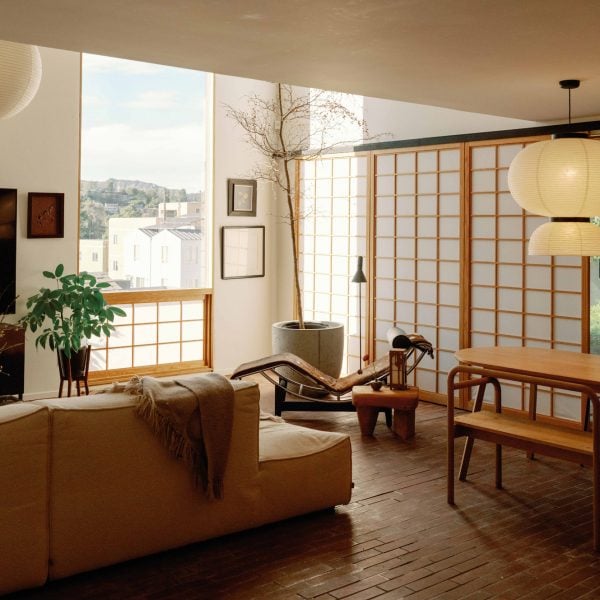Mid-century modern and traditional Japanese influences blend inside this Los Angeles home, which the principals of design studio OWIU have reimagined for themselves.
Close to Silverlake Reservoir on the east side of the city, the house was originally built in 1962 by renowned mid-century architect Carl Maston, then later owned and re-designed by Swiss architect Pierre de Meuron.
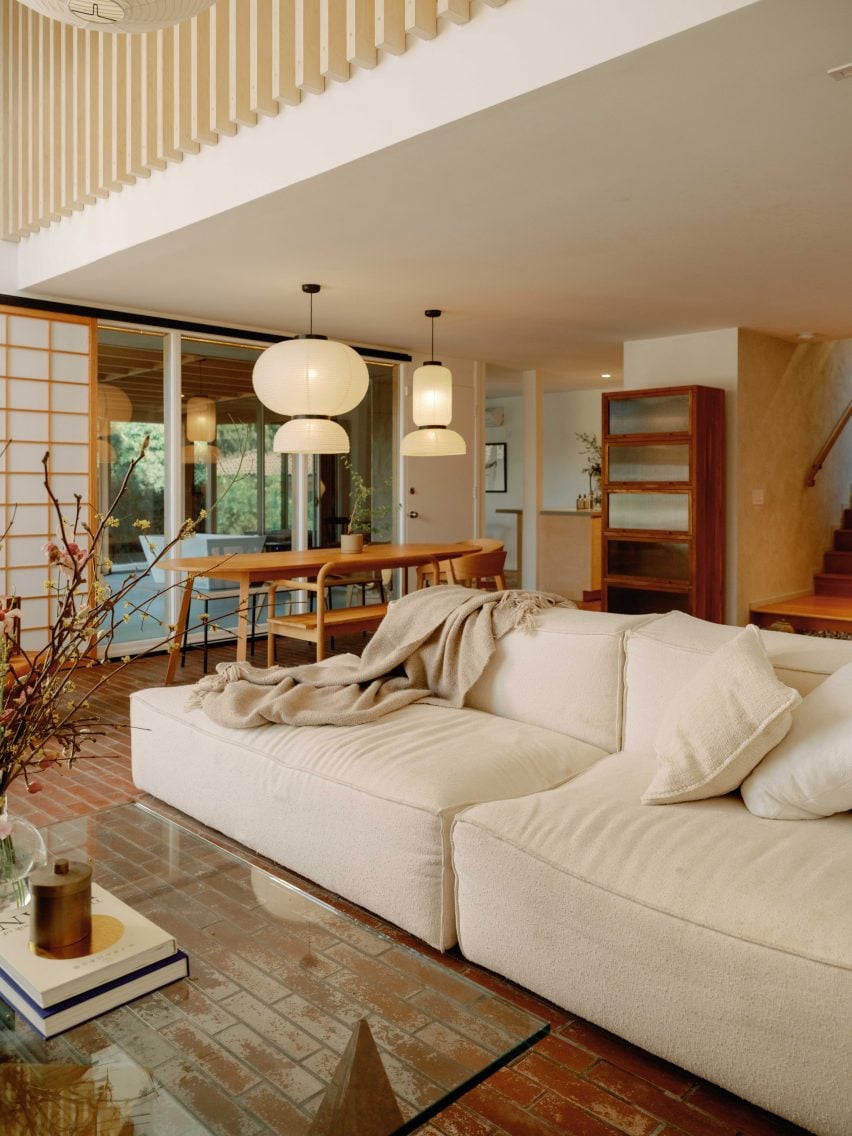
The property was sold to OWIU principals Joel Wong and Amanda Gunawan by de Meuron’s son, and the duo set about restoring the building while tailoring elements to their tastes.
“For Wong and Gunawan, it was a symbolic opportunity to extend the legacy of the home,” said a statement from the studio.
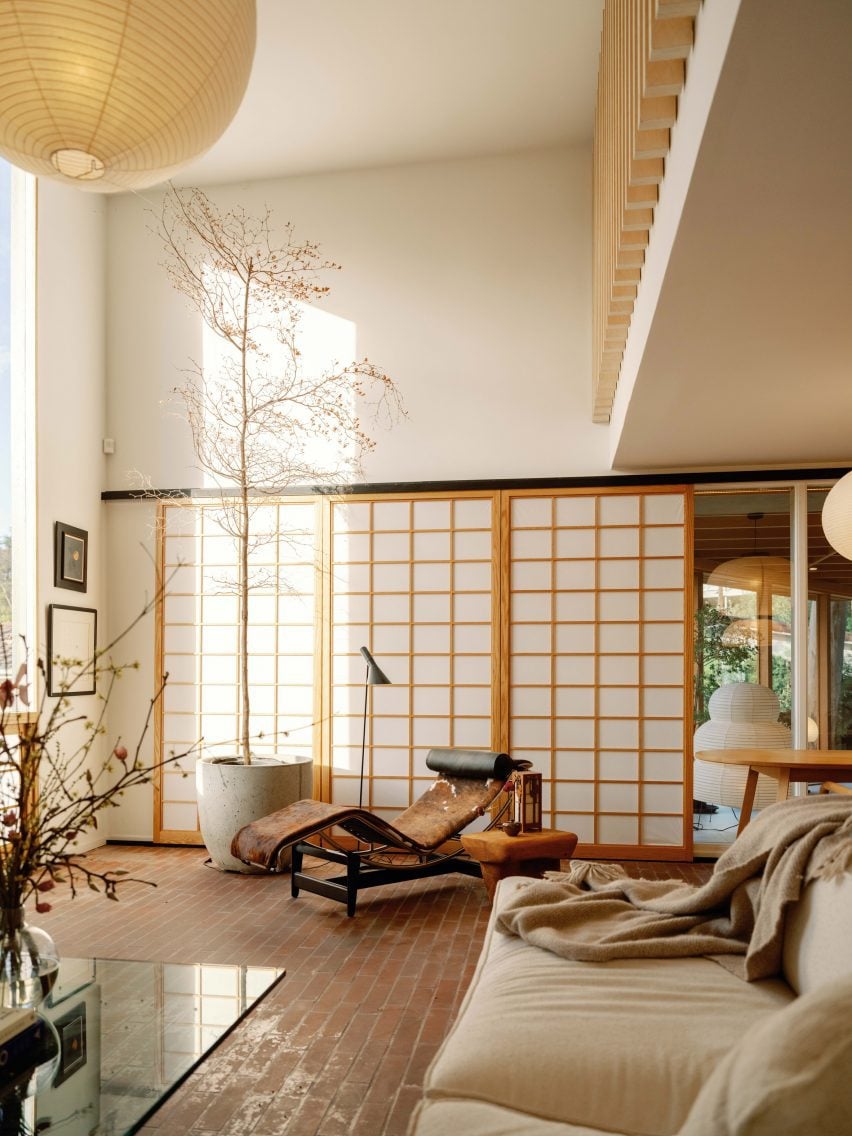
The couple retained structural elements like the brick flooring across the ground floor and left the basic layout relatively untouched.
However, they imbued the spaces with Japanese design elements – similar to those typically found in traditional ryokans, or inns – to create a sense of tranquillity within the city.
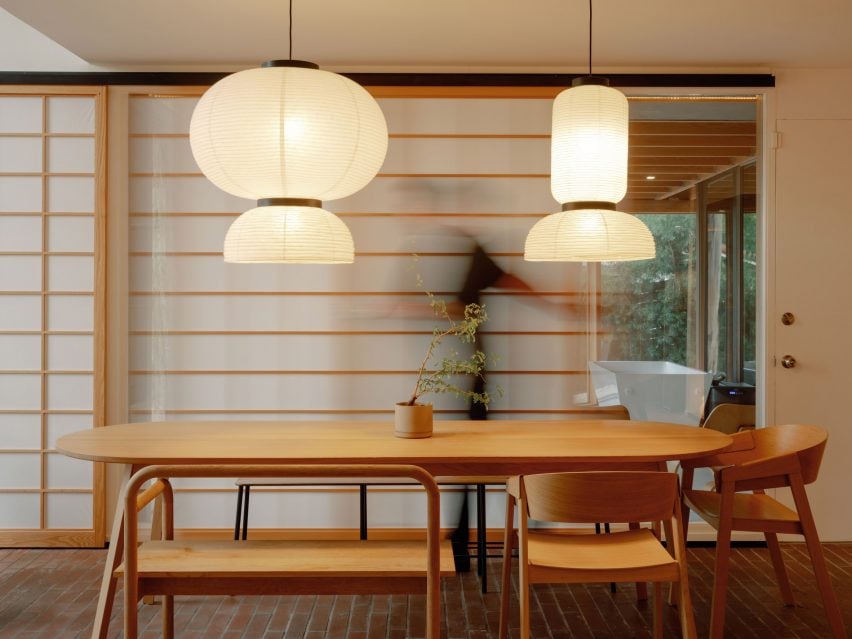
“A home shouldn’t energetically spark you,” said Gunawan. “It should be a place for meditation. You come home to recharge, re-balance.”
For instance, floor-to-ceiling sliding shoji screens were installed across both floors to offer options for partitioning the spaces and enabling privacy.
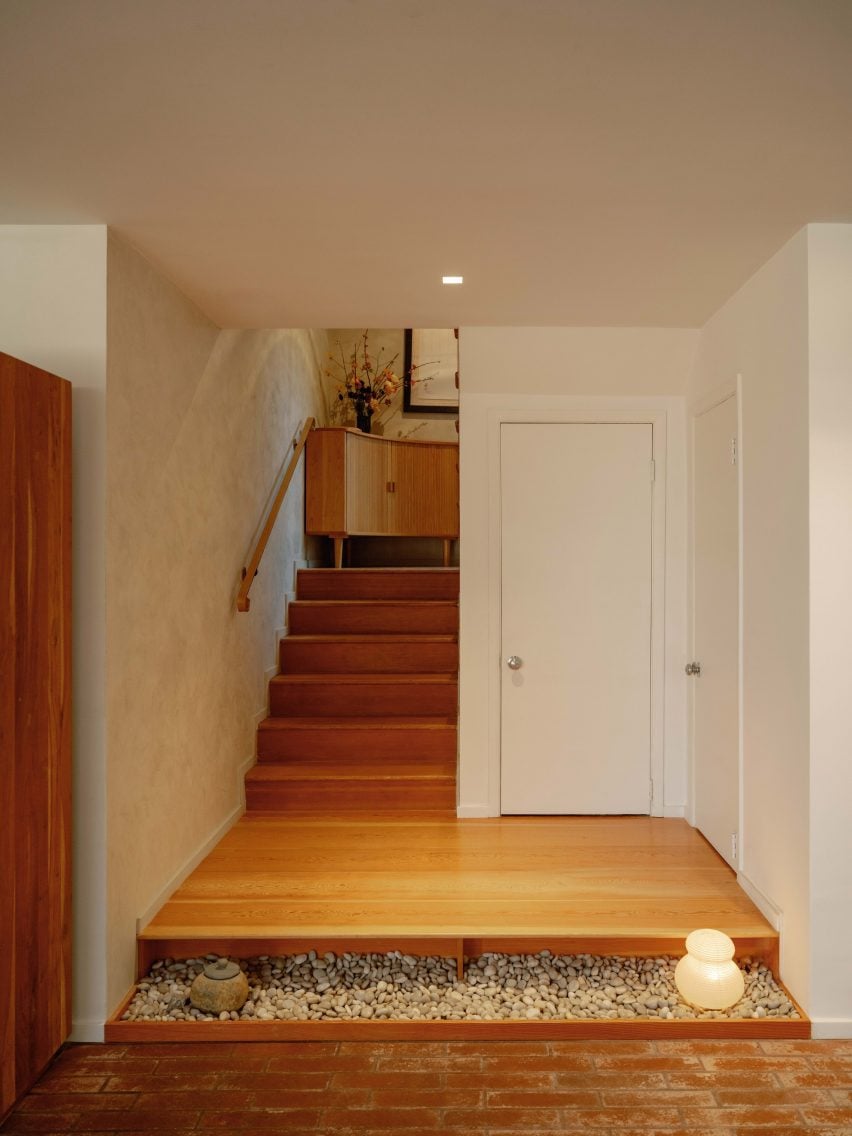
The light-filled living area enjoys a double-height ceiling and is furnished with a mix of contemporary and mid-century pieces including a Le Corbusier LC4 chair.
A mezzanine over the dining area creates a more intimate space that’s warmed by Akari lamps over the wooden table.
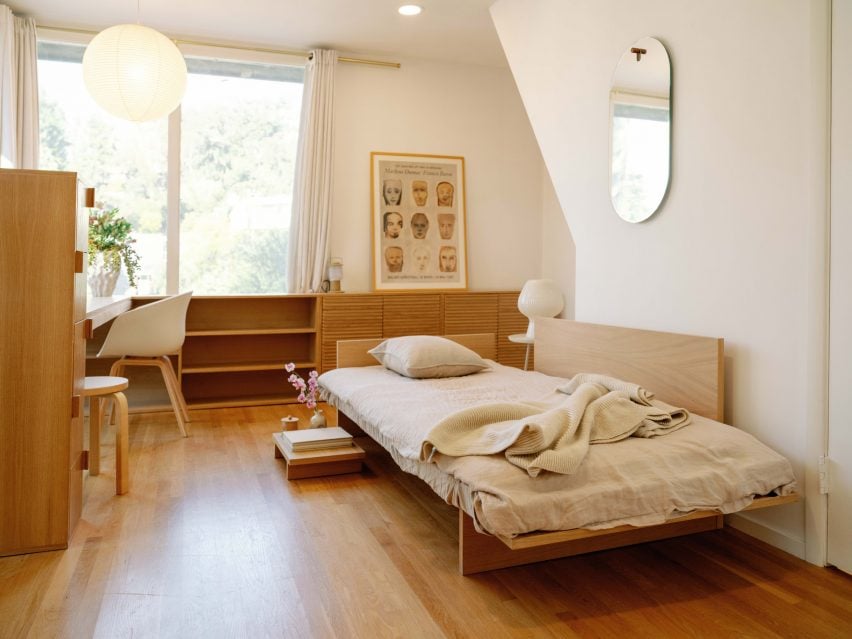
OWIU added a custom kiln-dried Douglas fir platform at the base of the staircase “to remind the guests they are ‘ascending’ into a more intimate space” and also installed a bespoke console to fit the curve of the landing.
The rooms upstairs are equally bright and open, with white walls, wood furniture and flooring, and pale linen fabrics all used for their calming qualities.
Despite being in the centre of Silverlake, the home is surrounded by greenery and feels relatively secluded, according to OWIU.
The connection to the outdoors is enhanced by large windows that face the lush foliage, breaking up the weathered timber facades.
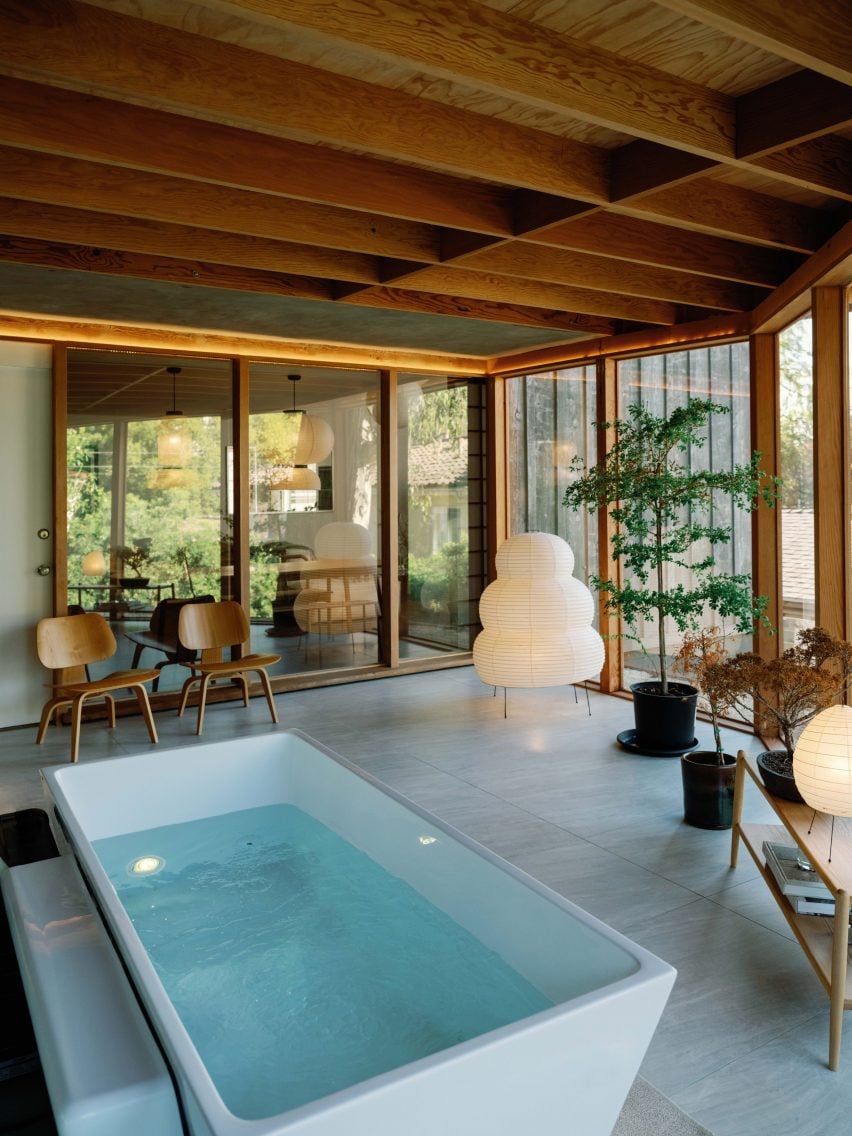
“I never understood why we needed to leave town or go far away to feel we’re in nature,” Gunawan said. “I love that we can build a home that brings the feeling of retreat and peace to my everyday life.”
She and Wong also built a glass-wrapped extension that houses a wellness centre with a sauna and cold plunge tub for rejuvenation and meditation.
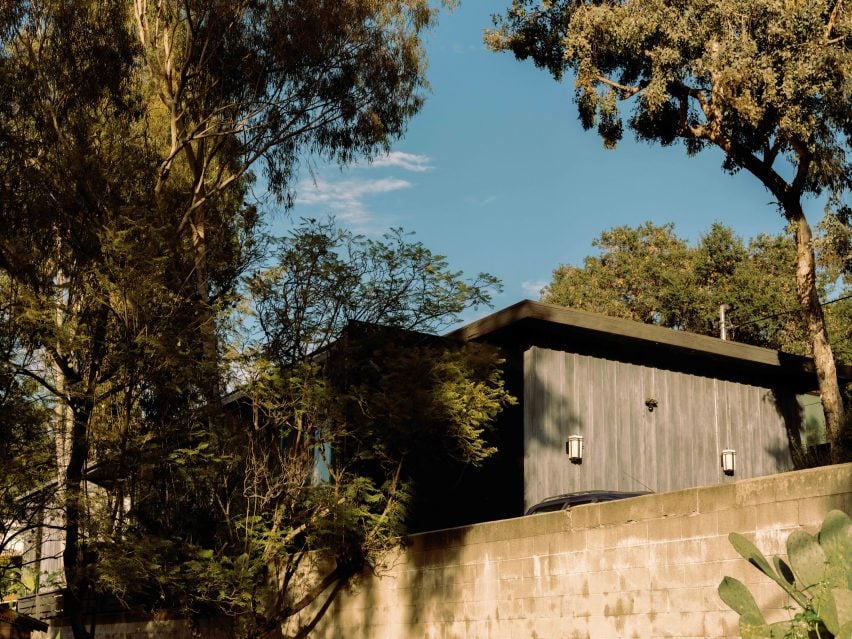
This isn’t the first time OWIU has looked to traditional Japanese inns for references for their projects in LA.
The studio previously took a similar approach when renovating another mid-century home as well as an apartment in an old biscuit factory – both times adding Japanese design elements to the spaces.
The photography is by Justin Chung.

